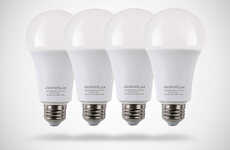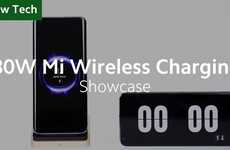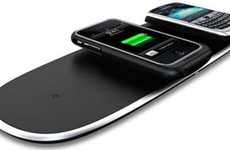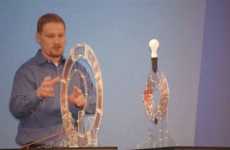
MIT Team Powers Light Bulb with No Wires
Rose A. Valenta — June 10, 2007 — Unique
References: apnews1.iwon & apnews1.iwon
The household power cord might become a thing of the past. Researchers at the Massachusetts Institute of Technology (MIT) have discovered a way to transmit wireless power, causing a 60-Watt bulb to light. The new technology follows in the footsteps of the radio, wireless telecommunications, and Wi-Fi.
If you like this, you may also like to learn about wireless recharging, which Trend Hunter featured HERE and HERE.
Implications - After checking both of those awesome examples of wireless energy, you should also consider the work that the Massachusetts Institute of Technology has done with their 60-watt light bulb, as it is a very futuristic creation.
If you like this, you may also like to learn about wireless recharging, which Trend Hunter featured HERE and HERE.
Implications - After checking both of those awesome examples of wireless energy, you should also consider the work that the Massachusetts Institute of Technology has done with their 60-watt light bulb, as it is a very futuristic creation.
Trend Themes
1. Wireless Power - MIT's breakthrough in wireless power transmission allows for new possibilities in cordless device charging, remote powering, and smart infrastructure.
2. Smart Lighting - Wireless power can enable new innovations in lighting technology, allowing for easier installation and control of smart bulbs and fixtures.
3. Internet of Things (iot) - Wireless power can help to power and connect the multitude of IoT devices, creating new possibilities for smart homes, factories, and cities.
Industry Implications
1. Consumer Electronics - Wireless power can disrupt the consumer electronics industry by eliminating the need for cords and allowing for more streamlined and efficient charging methods.
2. Lighting - Smart, wirelessly powered lighting systems can revolutionize the lighting industry, allowing for greater customization and control and more sustainable energy use.
3. Infrastructure - Wireless power transmission can transform infrastructure by creating new possibilities for remote powering and monitoring of devices and systems, such as in smart cities and factories.
2.8
Score
Popularity
Activity
Freshness























